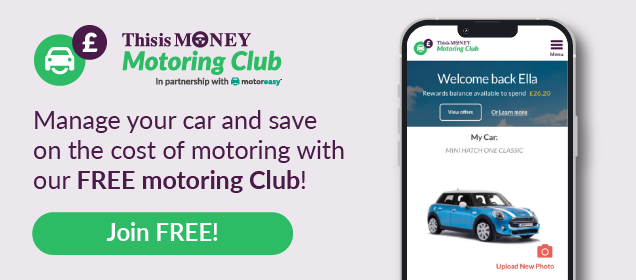A Chinese car maker has unveiled a new feature designed to help subdue drivers’ anger at the wheel – but it’s an incredibly odd and distracting solution.
Called the ‘Road Rage Reliever’, it intends to bring down the boiling blood level of individuals who has just been cut up, pulled out on, or put at risk by other motorists.
Rather than becoming so irate that they burst into a fury of swear words, offensive hand gestures and – in extreme cases – physical altercations with other road users, Xpeng wants its customers to instead throw virtual emojis at them to express their pent-up frustration.
The oddball feature has been showcased by the Chinese EV manufacturer in a preview for its forthcoming P7 saloon.
At the press of a button, drivers can fling anything from virtual angry faces, flip-flops and even pigs at an offending motorist – and it plays out on a digital panel in front of the windscreen like it’s happening in real life.
Unveiled earlier this month during a presentation in China, Xpeng says ‘drivers are responsible for judging when it’s safe to use’, though it will raise alarm bells if made available in Europe, where driver distraction is already a major issue.
It comes as a recent report found that more than three quarters of UK drivers have been involved in some form of road rage incident in the last 12 months.
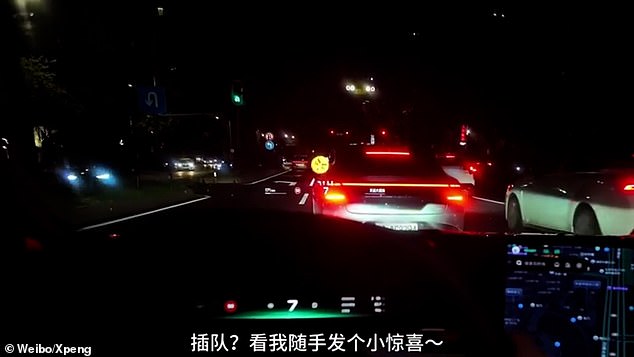
Chinese car maker Xpeng has debuted its new ‘Road Rage Reliever’ feature. Using a digital head-up display in front of the windscreen, drivers can throw virtual emojis at other motorists who cut them up, rather than getting angry behind the wheel
Xpeng CEO He Xiaopeng introduced Road Rage Reliever as a form of ‘technology-driven emotion’ during the presentation of the new 2025 P7 at the beginning of August.
The system uses an 87-inch-wide augmented reality head-up display (AR HUD) covering almost the entire field of vision for the driver.
The HUD is part of what Xpeng has dubbed its new interior ‘Technology Island’ as, like Chinese rivals, it attempts to set itself apart from the crowd with unique cabin features.
The head-up unit has been co-developed with Chinese electronics manufacturer Huawei and is the ‘world’s first HUD solution to integrate AI smart driving’.
The system is said to be so advanced that it has taken into account the distortion needed for your eyes to believe that digital items are appearing on the road up to 10 metres (33 feet) in front of the car.
The display is powered by three microchips that provide enough processing power to produce 2,250 trillion operations per second. As such, it can simulate what’s taking place in real time up ahead in digital form.
When fed information from radar sensors and cameras around the car, it can map out a live augmented reality view – and even predict movements by 0.3 seconds.
As such, it can virtually project GPS instructions onto the virtual road displayed. For instance, when approaching a motorway slip road, the lane will turn green like it’s a full-size sat-nav screen. Xpeng calls it a ‘light carpet’.
But it too can turn the driving experience into an augmented reality game to ease the sensation of road rage when it bites.

Would throwing a virtual one of these at another driver help to ease your road rage? Xpeng thinks it will be effective in China
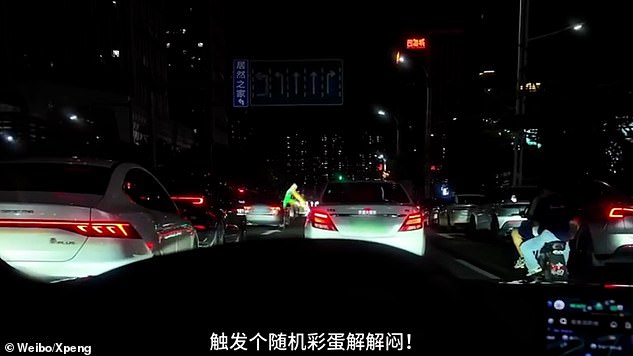
The system uses an 87-inch-wide augmented reality head-up display (AR HUD) covering almost the entire field of vision for the driver. It has been co-developed with Chinese smartphone maker Huawei and is the ‘world’s first HUD solution to integrate AI smart driving’
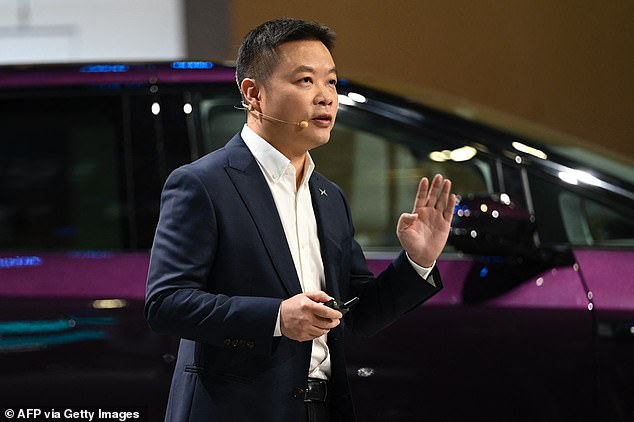
Xpeng CEO He Xiaopeng said at its unveiling in China this month that ‘drivers are responsible for judging when it’s safe to use’ the feature
When a driver is angered by another road user, they can throw a selection of virtual emojis at the vehicle that’s just swerved into their path, failed to indicate, or done something particularly frustrating to irk them.
Whether this helps to relieve road rage is an entirely different question.
The system automatically identifies the target vehicle and, using a button on the steering wheel, drivers can fire a range of full-colour, animated emojis that appear to detonate when they hit the car in their path.
The presentation of the feature shows the emojis can be anything from lollipops to lamas, all of which explode on impact like in a real-life game of Mario Kart.
Xiaopeng told the audience that the Road Rage Reliever will provide an outlet for ‘civilised frustration’ rather than ‘engaging in dangerous behaviours’.
With the P7 currently offered only to the Chinese market and no report on whether it will be sold in the UK, lawmakers won’t have to make a decision just yet on whether they would want to outlaw such an immersive feature for motorists… for the time-being, anyway.
However, given growing concerns regarding driver distraction already linked to touchscreen infotainment systems in the latest vehicles, we have serious reservations as to whether this feature will be deemed fit for European and UK models.
Xpeng officially launched in Britain in February, becoming one of a variety of new Chinese marques to enter the UK market.
It currently offers one model, the G6, which is an all-electric mid-size coupe priced from £39,990.
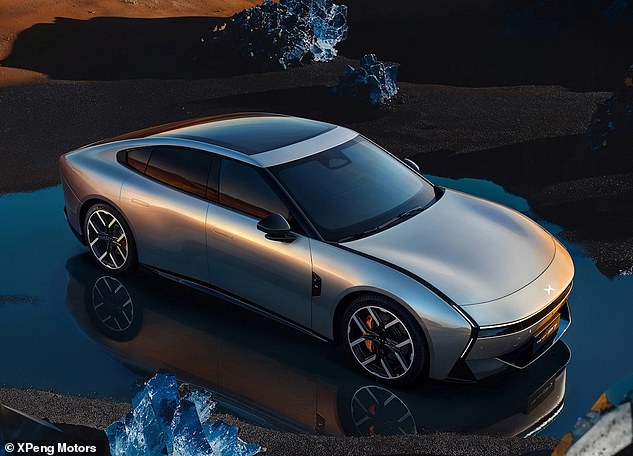
The Road Rage Reliever is due to debut in the new Xpeng P7, which is being sold in China from this month
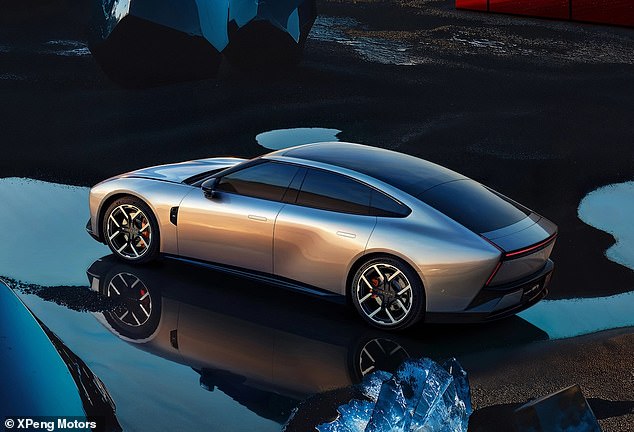
The P7 will offer a maximum range of 510 miles between charges – though this is based on its domestic test cycle which typically produces optimistic range claims
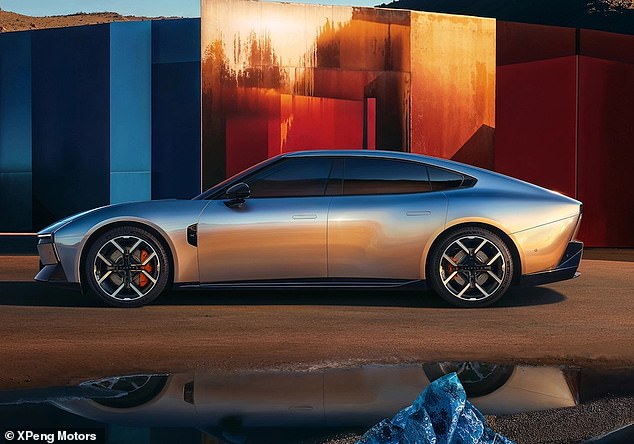
This five-seat saloon model will be quick too, accelerating from rest to 62mph in 3 seconds and with an electronically limited top speed of 143mph
The new P7 will officially be launched in China this month and offer a maximum range of 510 miles between charges – though this is based on its domestic test cycle which typically produces optimistic claims.
The car features a next-generation 800V high-voltage architecture including a 5C ultra-fast charging AI battery that can add 326 miles of range in as little as 10 minutes using a compatible charging device.
This five-seat saloon model will be quick too, accelerating from rest to 62mph in 3 seconds and with an electronically limited top speed of 143mph.
Xiaopeng confirmed the EV was due to undergo a 24-hour endurance test this month to prove the capabilities of the new model.
He said drivers would be taking it in turns to keep the car running non-stop at high speed on 14 August (one of the hottest days of the year in China), only stopping for repeated ultra-fast charging.
There is no word yet about whether the new P7 will come to the UK.
Three quarters of UK drivers suffer road rage at least once a year
According to a recent poll of UK licence holders, being cut up is the driving scenario most likely to spark road rage.
Two in five of 1,000 motorists polled said being pulled out on is what makes them angry at the wheel most, followed by being tailgated (35 per cent), being sworn at, either verbally or with hand gestures (29 per cent), and witnessing another motorist using their mobile phone while driving (28 per cent).
The study, conducted by Select Car Leasing, also found that 77 per cent of the driving panel admitted they’d been involved in a road rage altercation in the past 12 months. Some 8 per cent said it happens multiple times a week.
Almost half (48 per cent) had experienced a honking of horns, two fifths had been on the receiving end of a rude hand gesture, and a quarter had endured a ‘verbal altercation’.
One in five said they’d been aggressively tailgated, while 16 per cent had been brake-checked during a feud with another road user.
A further 8 per cent claimed they’d been involved in a ‘physical altercation’ with another driver in the last year.

